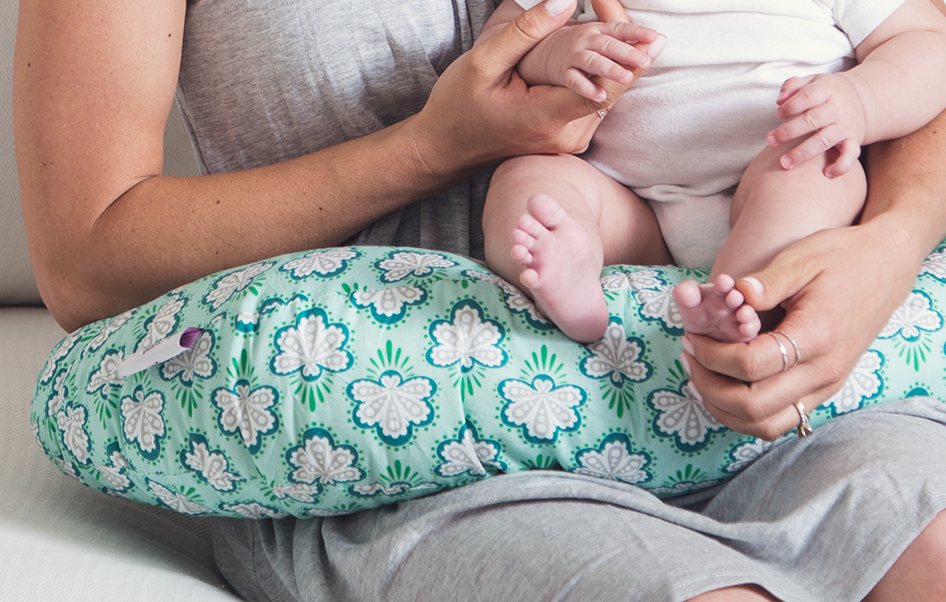On a balmy August day in 2007, I had a planned C-section at Hackensack University Medical Center in New Jersey. The bottom half of my body rushed with a tingly warm sensation from the spinal block as the nurse shot up a white screen, blocking my view from the chest down.
Then everything happened at warp speed.
“He’s peeing on me,” the nurse said — and I heard Jack cry like a baby bird. She held him up at a distance before turning her back to me. My newborn traveled from doctor to nurse to my mom. All swaddled up, I kissed him hello. The only part of my body that touched his were my lips on his cheek. I watched him being wheeled out of the room in the corner of my eye.
Because the maternity ward was overcrowded, I was away from my son in Recovery for five hours following a routine C-section with no medical complications. He stayed in the nursery with my mom and nurses. They gave him two bottles and changed his teeny diapers.
Finally, I was reunited with my newborn and my rage over not being able to bond with him in a 1-2-3 fashion dissolved into a puddle when I smelled his oatmeal-y head and kissed his perfect nose. He remained glued to my chest for hours.
Published in May of 2013, the Report of the Third National U.S. Survey of Women’s Childbearing Experiences revealed that 75 percent of women who have C-sections are separated from their babies immediately after the surgery compared to only 25 percent of babies who are separated from their mothers after a vaginal birth. Additionally, according to the Centers for Disease Control (CDC), only 32 percent of U.S. hospitals implement skin-to-skin care for most women and babies within two hours after an uncomplicated cesarean birth.
Rebecca Dekker of Evidence Based Birth says it’s mostly about hospital procedures, routine, and not emergent situations. “Most of the time when babies are separated from their mothers after a C-section, it is so that the hospital can provide post-op care to mom and newborn care in separate rooms.”
Evidence-based practice shows that immediate skin-to-skin contact at birth provides a smoother and faster transition from intra-uterine life to extra-uterine life, helping to regulate heart rate, respirations, glucose levels, and providing stronger bonding as well as easier and longer duration of breastfeeding. So why are C-section moms being denied the “magic hour”?
“Hypothermia is a concern for all newborns — whether born in a birthing room vaginally or operating room. In American hospitals, we have long managed this problem by drying and wrapping babies and putting them under warmers rather than putting them immediately on the mother’s skin,” says Dr. Amber Naresh, Assistant Professor of the Department of Obstetrics and Gynecology at Tulane University School of Medicine. “While it turns out that putting them on the mother’s skin is effective in preventing hypothermia, traditionalists can be difficult to persuade to change their ways in the OR.”
Tired of hearing C-section moms say things like “I carried my baby for nine months and didn’t get to be the first person to hold her” and “I felt like I had surgery, not delivered a baby” — and more disheartening, “I am so afraid bonding with my baby will not be the same as it was with my last baby during a vaginal birth,” a trio of nurses from Richmond, Virginia set out to make a real change.
Debbie Burbic, Kim Jarrelle, and Jess Niccoli are the owners of Clever Medical and collaborated to create the first of its kind Skin-to-Skin Cesarean Section Surgical Drape (patent pending). “We got busy on Kim’s dining room table with a sewing machine and tape,” Niccoli says. “There were over 50 prototypes.” In the end, they had constructed a sterile drape that shields mom from the surgical site but has a window that opens and closes with a flap. “This drape allows immediate skin-to-skin contact for C-section moms,” says Jarrelle. “The flap opens [and] Mom is able to see the physician pass the baby onto her chest.”
Doctors can see the value in their invention, too. “It decreases stress, improves bonding, breastfeeding, and provides a calmness in the OR setting,” Jarrelle says. “Mothers have told us [it was as if] everything got quiet in the OR after the baby was born and it was just them.” Dr. Naresh thinks the drape is “interesting.” She also comments that baby should be allowed with mom in recovery barring no medical concerns. “The sooner the better!”
Trish MacEnroe, Executive Director of Baby Friendly USA — an initiative that works to ensure mom and baby can have skin-to-skin care following delivery — says pregnant women need to empower themselves early on. “Moms have nine months to create a birth plan and research birthing centers that allow bonding after delivery. Express your desires to your healthcare provider, contact the nurse manager of Labor and Delivery and be sure to tell the administrator that you seek to bond with your baby when you pre-register at the hospital,” urges MacEnroe.
Baby Friendly USA is currently working with over 700 hospitals to implement the “Baby Friendly” way.
Pregnant? Check out the Baby Friendly locater for a list of participating birth centers that are keen on skin-to-skin bonding.
The post C-Section Babies Deserve Skin-to-Skin Bonding, Too appeared first on Babble.







You must be logged in to post a comment Login